Lexicon
The summer of 1932 saw the introduction of Lexicon, when a small edition was produced and sold to test the market.
During the time of the introduction of cartons and of jigsaw puzzles another change was taking place which was developing much more slowly. A writer by the name of David Whitelaw persuaded the company to produce and sell a word game - Lexicon. This was basically a pack of cards but with the faces changed from court cards and pips to letters of the alphabet. The summer of 1932 saw the introduction of this game, when a small edition was produced and sold to test the market. This was the first Waddingtons game and its introduction had an unsuccessful beginning. The first edition was sold through the stationery shops at 1s. 9d. each and sales were practically non-existent. It was decided to pack Lexicon more attractively and raise the price to 2s. 6d. per pack. This was an unprecedented approach in the stationery world and there was much opposition and criticism. However, when the real launching took place in the autumn, heralded by an intensive newspaper advertising campaign, sales, instead of being a hundred a month were thousands a day, and there was a wonderful success which has continued up to the present time.
Above: 1st edition of Lexicon, 1932. The set comes in a maroon slip case with the text "Patent applied for" and no registration number. The rules leaflet has the date 18/7/1932 printed at the bottom.
Above: early edition of Lexicon with date 18/7/1932 printed at the bottom of rules leaflet. The box says “Patent Applied For” but the backs give a Reg. No. so we guess it dates from around 1932-33. Images courtesy Pete Bond.
It was Lexicon which created the opportunity for Waddingtons to get Monopoly, because it gave the company credibility.
Lexicon is now owned and marketed by Winning Moves, who purchased the brand from Hasbro, along with Waddingtons No.1 Playing cards. (Hasbro bought Waddingtons Games Ltd in 1994).
Above: the spine of the re-designed box carries the text “Lexicon”, “By Atozed”, “Waddingtons” and the box and back design have the text “Regd No.529991”. The words ‘Master’ and ‘Ltd’ are printed in a different typeface to the earlier edition. The monogram is more or less the same but has been re-drawn. Click image to see alternative box. Image courtesy Matt Probert.
Soon Lexicon was published in a smart slip case and many different editions have followed, including foreign language versions.
Above: The rule book carries a date of October 1933, and a section on "How to Arrange a Lexicon Drive". The documentation also refers to "the increasing popularity of Lexicon Drives". (Click image to zoom). Image courtesy Matt Probert.
Above: later edition of Lexicon in red or orange slip case in the shape of a book.
![]()
Above: supplied in a cheap cardboard tuckbox, possibly during wartime paper rationing restrictions. Image courtesy Matt Probert.
Note: the above account of the introduction of Lexicon is taken from “A History of Waddingtons” by Victor Watson, Northern Heritage Publications, 2008.
Above: Lexicon wartime pack using lower-grade cardboard. Image courtesy Ian Taylor.

Left: imitation ‘Lexacon’ word building game from Australia.

By Simon Wintle
Member since February 01, 1996
Founder and editor of the World of Playing Cards since 1996. He is a former committee member of the IPCS and was graphics editor of The Playing-Card journal for many years. He has lived at various times in Chile, England and Wales and is currently living in Extremadura, Spain. Simon's first limited edition pack of playing cards was a replica of a seventeenth century traditional English pack, which he produced from woodblocks and stencils.
Trending Articles
Popular articles from the past 28 days
Related Articles

Woodblock and Stencil Jack of Hearts
A limited edition art print of the Jack of Hearts 1984 woodblock joker.
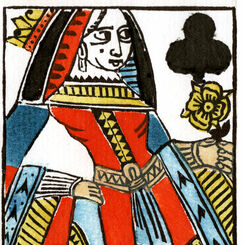
Woodblock and Stencil Queen of Clubs
A limited edition art print of the Queen of Clubs 1984 woodblock joker.
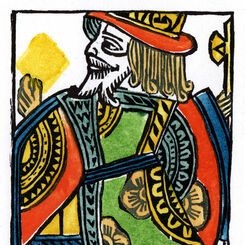
Woodblock and Stencil King of Diamonds
A limited edition art print of the King of Diamonds 1984 woodblock joker.
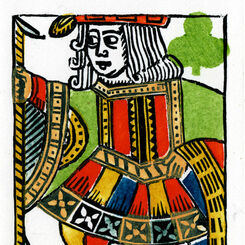
Woodblock and Stencil Jack of Clubs
A limited edition art print of the Jack of Clubs 1984 woodblock joker.
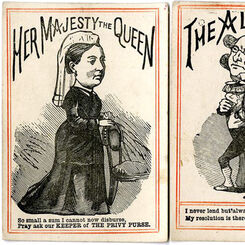
Lend Me Five Shillings
or “Her Majesty’s Privy Purse” - a merry round-the-table game published by D. Ogilvy.
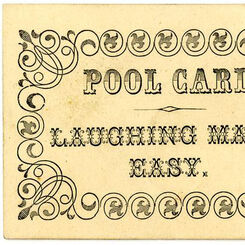
Laughing Made Easy
a Victorian card game published by D. Ogilvy.
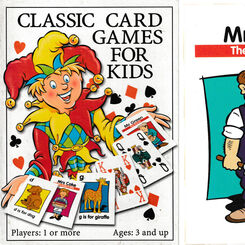
Classic Card Games for Kids
A boxed set of playing cards, Happy Families and an alphabet pack with rules for 22 games.

So-Lah – A Game of Music
An early 20th century domino-type musical card game by Goodall.
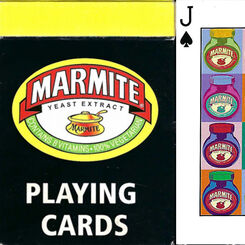
Marmite
Fifty-Four images celebrating a UK savoury spread, that has been around one hundred and twenty two y...
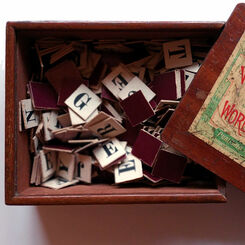
Word Making and Word Taking
How crossword and spelling games became popular.
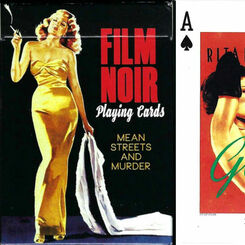
Film Noir
A deck of 55 cards, celebrating hard boiled heroes, wise-cracking women, mean streets, guns and gums...

Science Fiction
A deck of 55 cards, celebrating a time when Science Fiction truly was, Science Fiction.
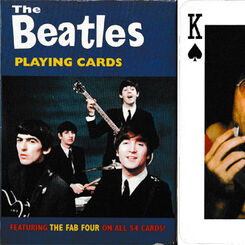
The Beatles playing cards
Two packs featuring photos of The Beatles issued by the same publisher in 2004 and 2005.

Costume Playing Cards
Four centuries of costumes from the Costume Court at the Victoria and Albert Museum.
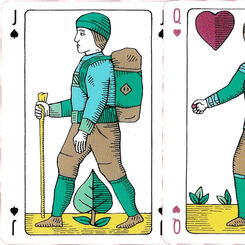
Commoners playing cards
Created by Ian Cumpstey dedicated to the common land and the countryside.

Liber Ludorum
Liber Ludorum playing cards created by Ian Cumpstey in the insular style, United Kingdom, 2019.

Pike and Clover playing cards
Pike and Clover playing cards created by Ian Cumpstey, Cumbria, UK, 2018.
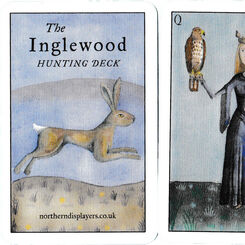
Inglewood Hunting Deck
Inglewood Hunting Deck created by Ian Cumpstey, United Kingdom, 2023.
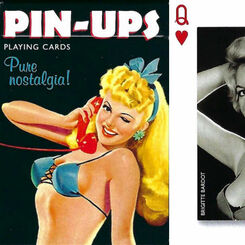
Pin-Ups
A deck of 55 cards celebrating a golden age of cheeky, naughty, bold and curvy ladies in film.
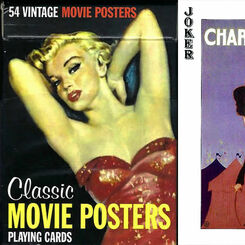
Classic Movie Posters
A deck of 55 cards presenting vintage classic movies and their stars.

That’s Entertainment
A deck of 55 cards celebrating 20th Century vaudeville, musicals and cabaret.
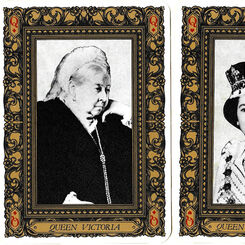
British Monarchs
Commemorating the royal wedding of Charles, Prince of Wales to Lady Diana Spencer on the 29th
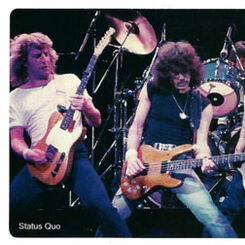
Rock & Pop Legends
Stunning photos of a selection of US and UK music artists.
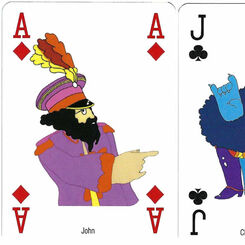
The Beatles • Yellow Submarine
A colourful deck celebrating the 1968 animated feature film based on the Lennon/McCartney song of th...

Dutch Court playing cards
Games & Print Services’ version of the Dutch pattern.

Past Masters’ Association Presentation Pack
The Worshipful Company of Makers of Playing Cards Past Masters’ Association Presentation Pack, 2013....
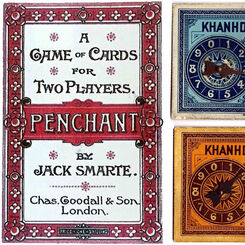
The Search for New Games in the late 19th century
A few new games survived and are still around today; most came and went and are only witnessed in th...
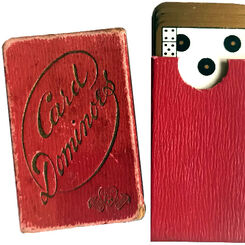
Miniature Card Dominoes
A miniature set of Goodall domino cards (5.9 x 3.5 cms) still in perfect condition.
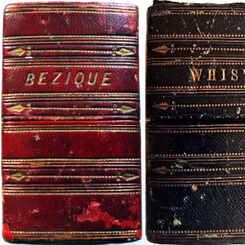
T. Drayton & Son
Bezique and Whist boxed sets by T. Drayton & Son, London, c.1875.

Colour doodle deck
“1952-2002 commemorative deck” customised with doodles by an uncredited artist, UK, 2011.
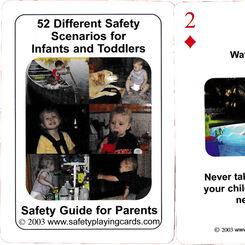
Safety playing cards
Safety playing cards designed to reinforce the “Think and Be Safe” concept.

Carte Osteologiche
Skulls and bones of all descriptions have become the suits and pips in this 40-card pack from Italy....

Alice in Wonderland: we’re all mad here
Alice in Wonderland themed playing cards, UK, 2020.
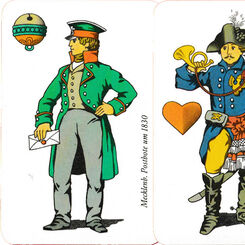
Postgeschichte
A celebration of different postal systems in Germany from 1630 to 1850, with designs by Volker Hartm...
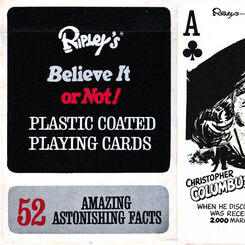
Ripley’s Believe It or Not! playing cards
Strange facts from Robert Ripley’s ‘Believe It or Not’ books, in the form of cartoons.
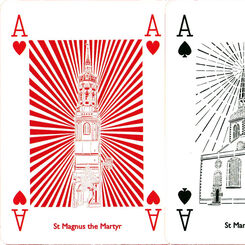
Wren 300 playing cards
Papercuts by Chloe Campbell of the 52 Wren churches in the City of London.
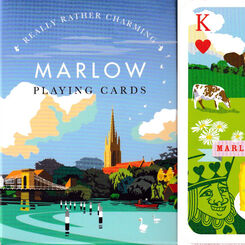
Marlow playing cards
Visitor attractions and businesses to be found in Marlow, Buckinghamshire.

Playing Politics 2010
“Playing Politics ’10: With no expenses spared” featuring caricatures by Oliver Preston, published b...
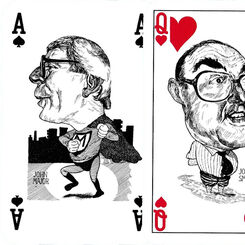
Playing Politics ’92: Pack of lies
Playing Politics ’92: Pack of lies with caricatures by Grant Robertson, UK.

B-Deck
“B-Deck” scurrilous playing cards poking fun at a former UK prime minister.

52 Ways to talk about adoption
‘52 Ways to talk about adoption’ family-centred playing cards produced by the Center for Adoption Su...

Winstanley Geographical cards
Facsimile of Winstanley’s Geographical cards produced by Harold & Virginia Wayland, 1967.

Meal Tub Plot
Meal Tub Plot playing cards [facsimile] with 17th century sketches by Francis Barlow.

Golf playing cards
Golf playing cards published by Marks & Spencer, UK.


